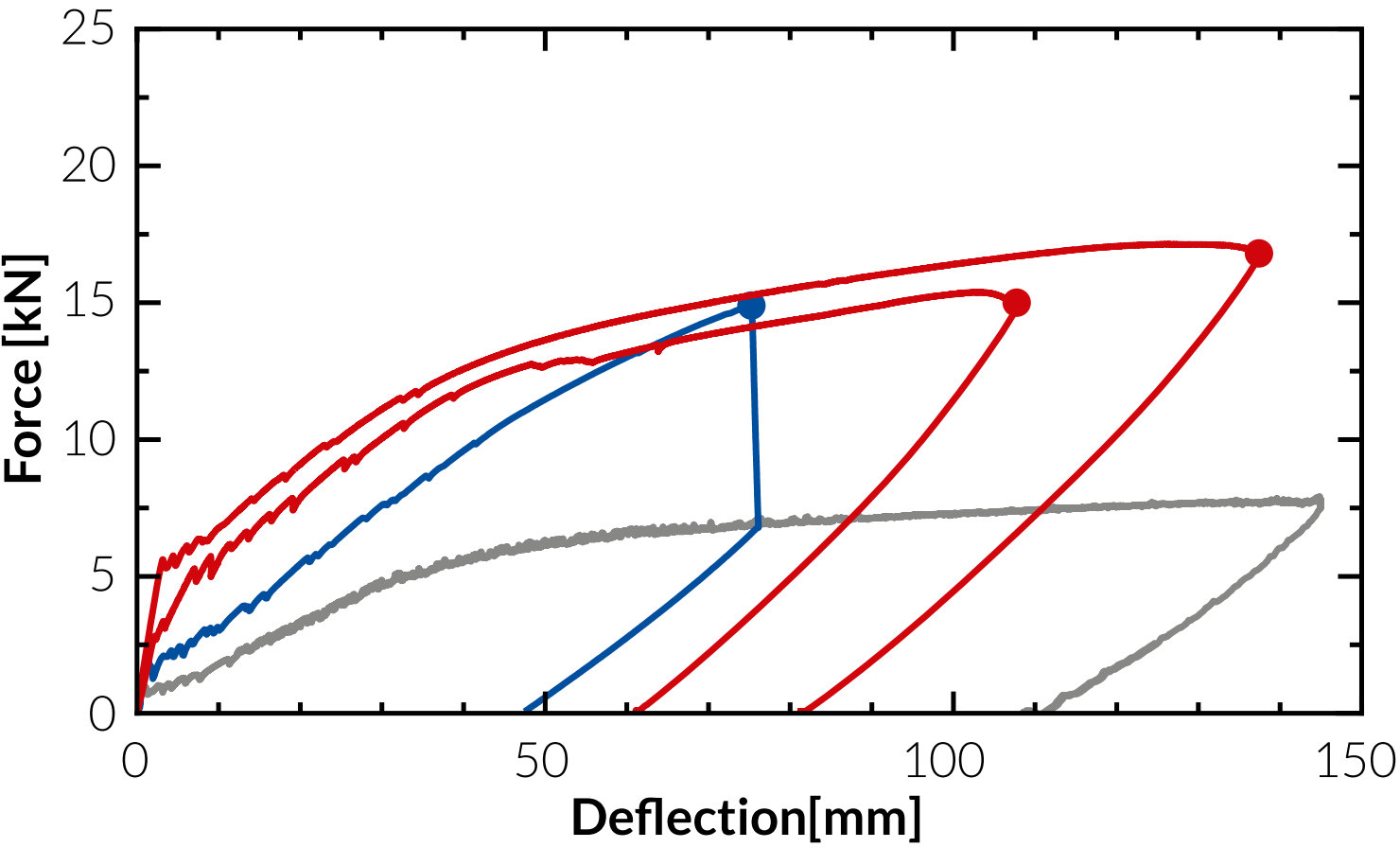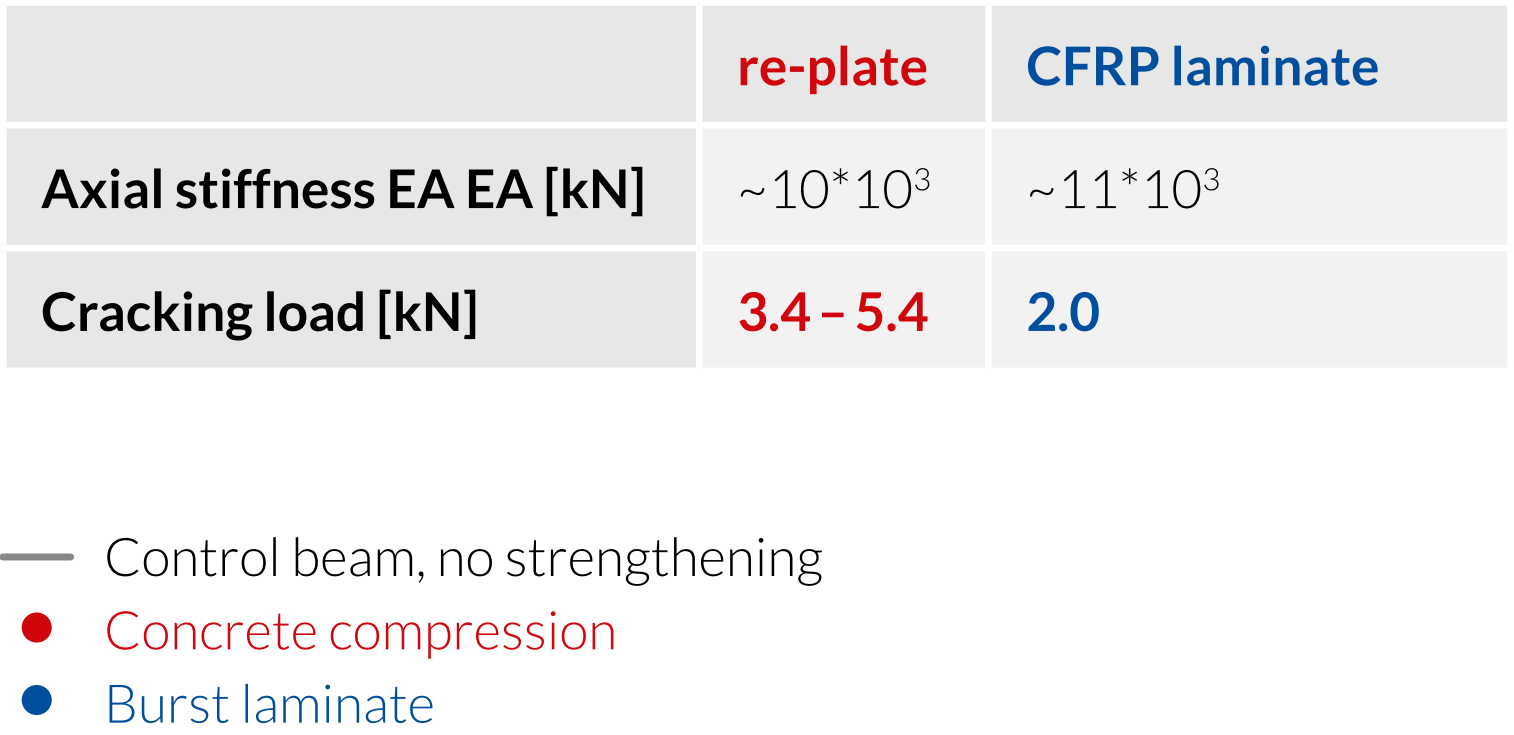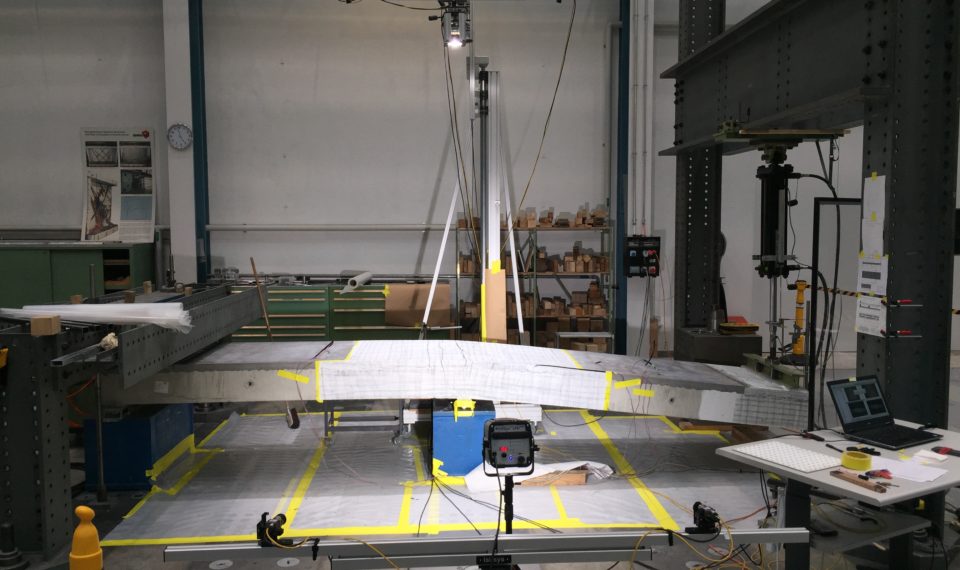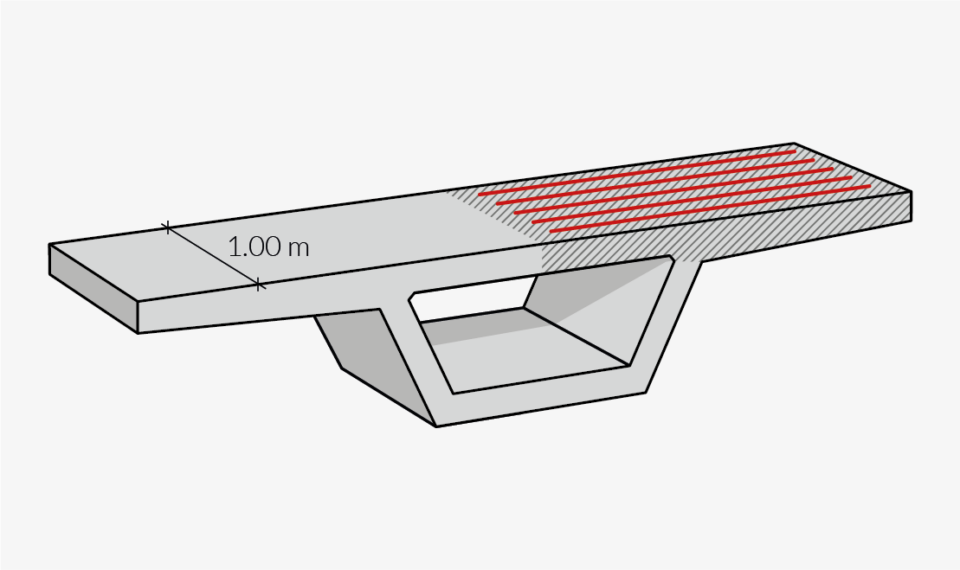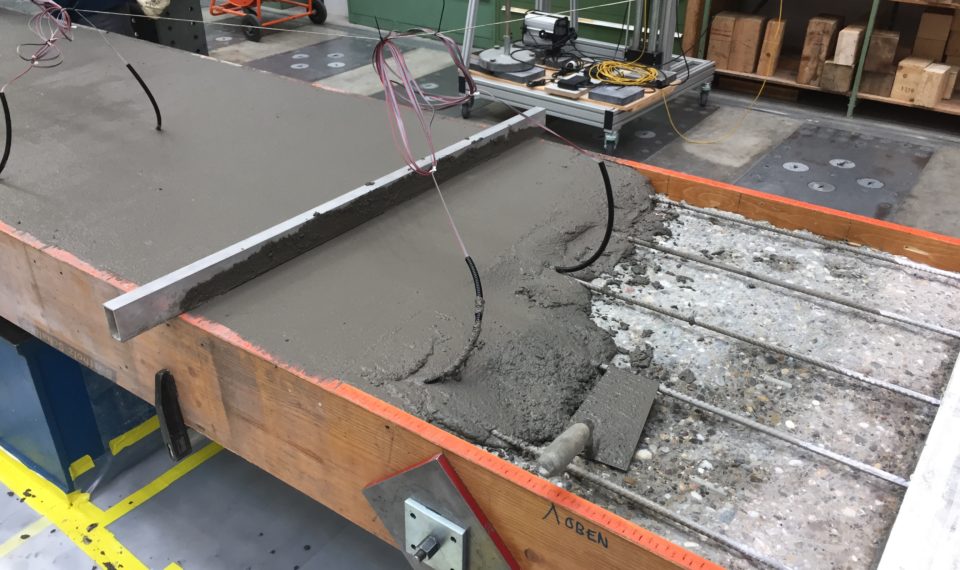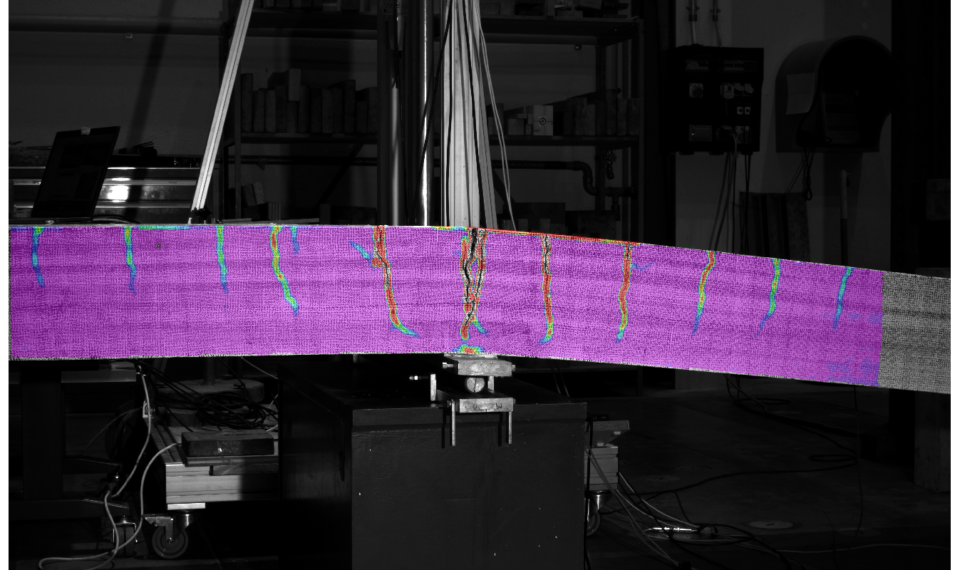Research & Devolopment
Research partners worldwide are the foundation of our expertise and enable future developments.
Research reports are available from re-fer upon request.
Bending strengthening of a concrete slab with re-bar
A research project at Empa Switzerland investigated the flexural load carrying capacity of bridge decks strengthened with re-bar. The bars were installed in grooves cut in the top of the concrete deck and grouted with SikaGrout®-314 N. In a second series, the re-bar was installed on the roughened concrete surface, embedded in Sika MonoTop®-452 N repair mortar over the full width of the deck. This large-scale test simulated a bridge deck transversely strengthened with 5 prestressed re-bars.
Test results: Negative moment strengthening
The crack widths measured were significantly reduced for the same loading. The structure remained in the uncracked state for longer. The fact that the load is removed from the inner tensile reinforcement by an additional prestressing also benefits the fatigue behaviour and therefore the lifetime of the structure.




Cracking load was tripled.
Failure load was doubled.
Internal reinforcement is relieved from load.
Longer lifetime.
Failure load test: shear strengthening on T-beam
Failure load tests were carried out at Empa in Switzerland designed to obtain shear failure. An initial control test beam, without additional re-bar shear stirrup strengthening, was loaded to failure. This severely damaged control beam, with broken shear reinforcement and gaping cracks, was repaired by injection and post-strengthened with Sika products and re-bar stirrups. Four additional undamaged T-beams were strengthened with re-bar shear stirrups and tested in the same procedure.
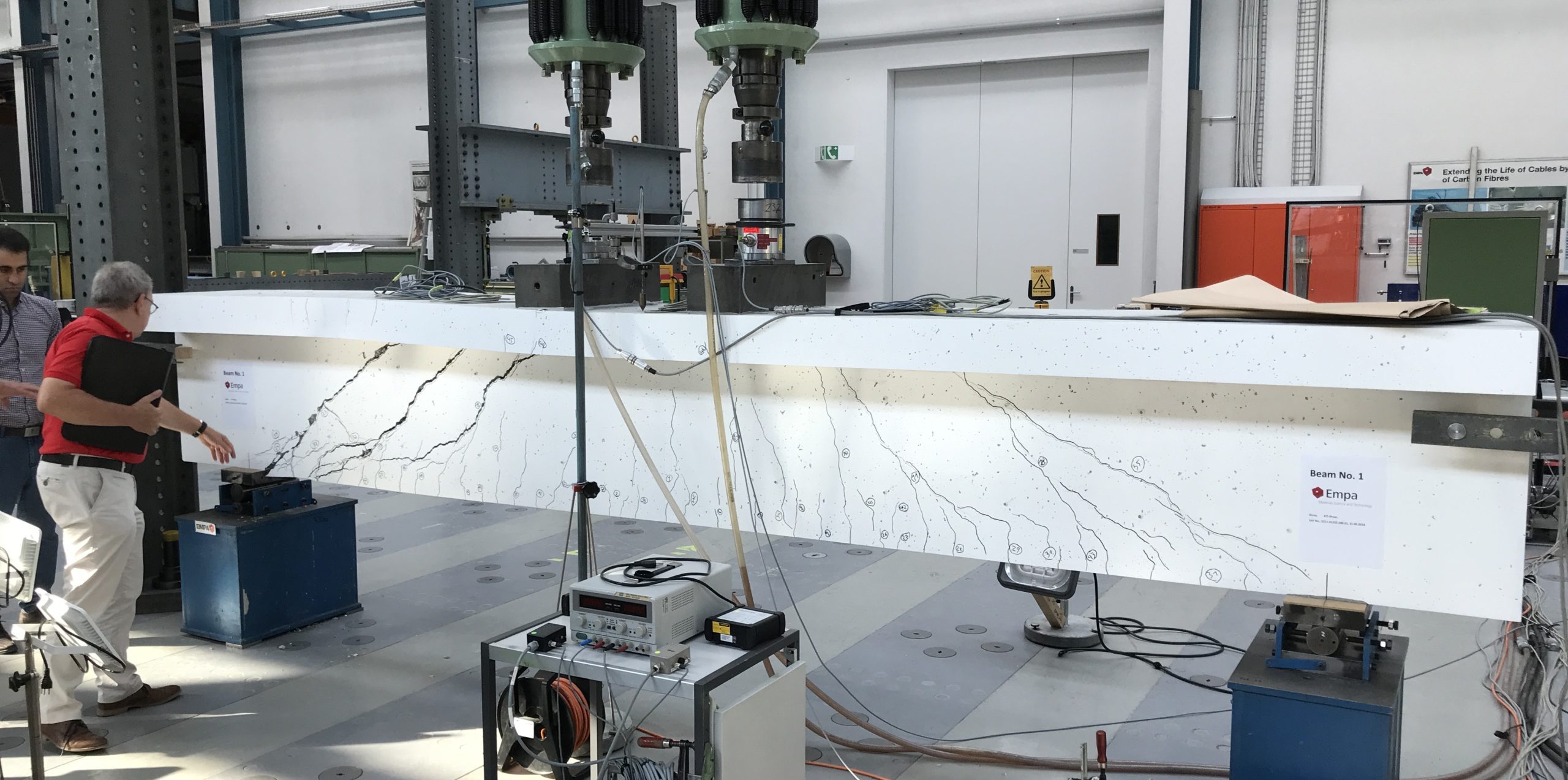
The tests on the re-bar strengthened beams showed considerable gains in their shear failure load. The prestressing also kept the crack opening widths smaller at equal loadings than without prestressing.


Strengthening of partly destroyed structures after earthquakes is possible.
Due to the prestressed re-bar shear stirrups, a 30% increase in the failure load of the partly destroyed control beam was obtained.
Due to activation/prestressing of the re-bar shear stirrups, crack opening only occurred with a 50% higher load capacity.


Due to the prestressing, the tensile stress in the internal shear reinforcement was relieved. Strain gauges on the internal reinforcement showed that it began to yield in the control beam at ~200 kN. Due to the prestressing with 5 prestressed re-bars, reinforcement yield only began at ~500 kN.
Improved fatigue behaviour.
Large-scale test: re-plate comparison with CFRP laminates
Flexural tests at Empa show re-plate and CFRP laminates at similar axial stiffness EA. The strengthened concrete slabs (depth 150 mm, width 500 mm, span 4 m) were also compared with a control beam with no strengthening and showed much higher failure loads. For the ductile re-plate strengthening system, failure occured due to concrete crushing in the compression zone at high deflection levels. The CFRP strengthening system with low elongation at break failed prematurely due to strip debonding. By prestressing with the ductile re-plate strengthening system, a much higher cracking load was also achieved.
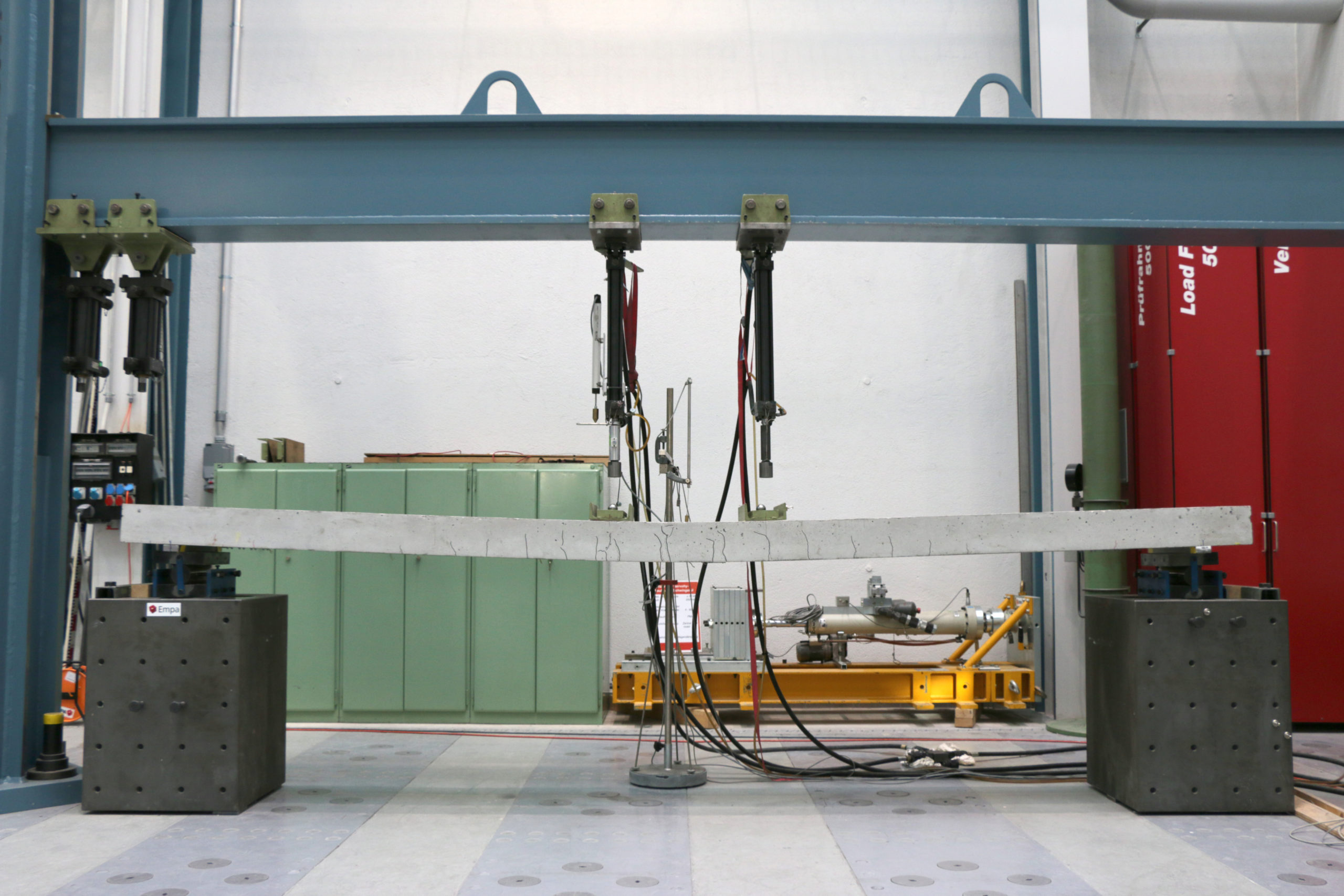
70 - 170 % increase in cracking load compared with CFRP laminates.
